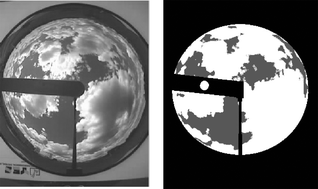The variation of the biologically damaging solar UV (UVBE) enhanced by clouds above that of clear sky UVBE has been investigated. This was undertaken for summer through to winter for SZA of 5 to 60° employing an integrated automatic cloud and spectral UV measurement system that recorded the solar UV spectra and the sky images at five minute intervals. The UVBE calculated with action spectra with higher relative effectiveness in the UVA produced the lower percentage of cloud enhanced cases. The DNA UVBE provided the highest percentage of cloud enhanced cases compared to the total number of UV scans with 2.2% cloud enhanced cases. As a comparison, the plant and fish melanoma UVBE provided the lowest percentage of cloud enhanced cases with 0.6 to 0.8% cloud enhanced cases. For the cases of cloud enhanced UVBE, the average ratio of the measured UVBE to calculated cloud free UVBE for the photokeratitis, cataracts, plant, generalized plant damage and fish melanoma action spectra was 1.21 to 1.25. In comparison, the highest value of 1.4 was for the DNA action spectrum.

You have access to this article
 Please wait while we load your content...
Something went wrong. Try again?
Please wait while we load your content...
Something went wrong. Try again?


 Please wait while we load your content...
Please wait while we load your content...